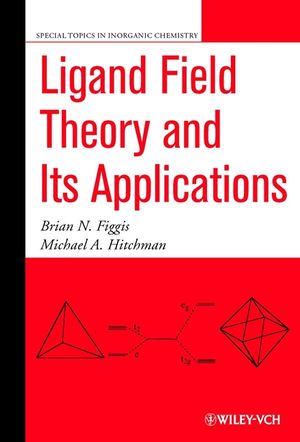Ligand Field Theory and Its ApplicationsISBN: 978-0-471-31776-0
Hardcover
376 pages
December 1999
 This is a Print-on-Demand title. It will be printed specifically to fill your order. Please allow an additional 10-15 days delivery time. The book is not returnable.
|
||||||
A complete, up-to-date treatment of ligand field theory and its
applications Ligand Field Theory and Its Applications presents an
up-to-date account of ligand field theory, the model currently used
to describe the metal-ligand interactions in transition metal
compounds, and the way it is used to interpret the physical
properties of the complexes. It examines the traditional
electrostatic crystal field model, still widely used by physicists,
as well as covalent approaches such as the angular overlap model,
which interprets the metal ligand interactions using parameters
relating directly to chemical behavior.
Written by internationally recognized experts in the field, this book provides a comparison between ligand field theory and more sophisticated treatments as well as an account of the methods used to calculate the energy levels in compounds of the transition metals. It also covers physical properties such as stereochemistry, light absorption, and magnetic behavior. An emphasis on the interpretation of experimental results broadens the book's field of interest beyond transition metal chemistry into the many other areas where these metal ions play an important role.
As clear and accessible as Brian Figgis's 1966 classic Introduction to Ligand Fields, this new book provides inorganic and bioinorganic chemists as well as physical chemists, chemical physicists, and spectroscopists with a much-needed overview of the many significant changes that have taken place in ligand field theory over the past 30 years.
Written by internationally recognized experts in the field, this book provides a comparison between ligand field theory and more sophisticated treatments as well as an account of the methods used to calculate the energy levels in compounds of the transition metals. It also covers physical properties such as stereochemistry, light absorption, and magnetic behavior. An emphasis on the interpretation of experimental results broadens the book's field of interest beyond transition metal chemistry into the many other areas where these metal ions play an important role.
As clear and accessible as Brian Figgis's 1966 classic Introduction to Ligand Fields, this new book provides inorganic and bioinorganic chemists as well as physical chemists, chemical physicists, and spectroscopists with a much-needed overview of the many significant changes that have taken place in ligand field theory over the past 30 years.



